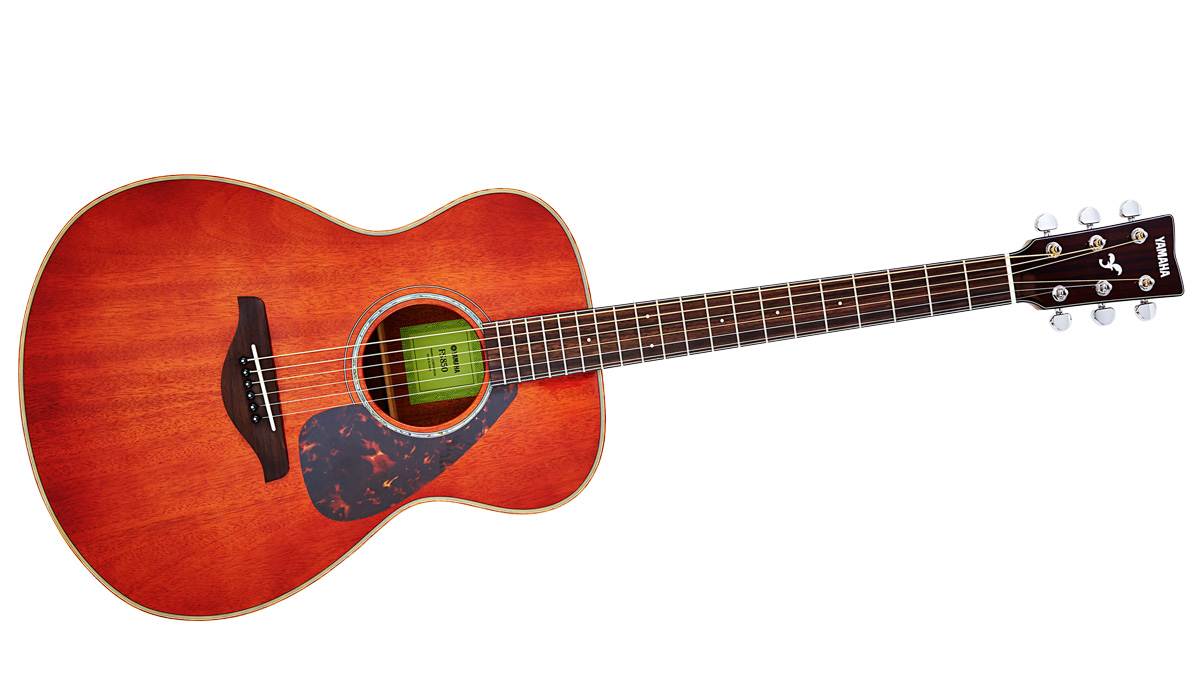MusicRadar Verdict
While it may suit younger players, it's a very cool piece for electric players, too: its more Gibson-like string spacing and scale feel very familiar - a plectrum player's tour de force.
Pros
- +
Supremely comfortable.
Cons
- -
Size will put some off.
MusicRadar's got your back
The FG monicker apparently, stands for 'folk guitar', but the FGs are deadnnought-sized, and if you want an actual 'folk'-size guitar, you'll want this FS -sitting somewhere between Martin's 00 and 000 sizes - the genesis of which seems to date back to the Yamaha FG1500 of the early 70s.
The FS has a shorter 635mm (25- inch) scale length, a reduced body width of 381mm (15-inch) and shallower depth by about 8mm.
It retains the same width and string-spacing at the nut as it's bigger bro' but - importantly - reduces the string spacing at the bridge from 55mm to 50mm. This is why when you start playing this lil' chap things feel rather cramped.
For many players a smaller 000-size is the perfect fingerpicking guitar and many a more 'serious' model has a wider nut and bridge string spacing. So, here, FS doesn't really stand for 'FingerStyle': it more accurately equates to 'For Student' or 'For Small (people)'. Ahem.
But while the new FSs start with the wallet-friendly FS800 (£268), this one, along with the FG850 dreadnought, tops this new range. It's certainly classy in style with its solid mahogany top and wood edge-binding, abalone soundhole inlay and fine white coach- line inside its black-bound fingerboard and headstock; its more compact dimensions also make for an extremely comfortable seated player.
Sound-wise the combination of its reduced size and its hardwood top give it a slightly narrower sound with a little less bass oomph and slightly rounded, almost compressed, highs but it's not as 'bluesy' or powerful as Martin's only slightly smaller-bodied new, all-sapele Dreadnought Junior.
Want all the hottest music and gear news, reviews, deals, features and more, direct to your inbox? Sign up here.
Dave Burrluck is one of the world’s most experienced guitar journalists, who started writing back in the '80s for International Musician and Recording World, co-founded The Guitar Magazine and has been the Gear Reviews Editor of Guitarist magazine for the past two decades. Along the way, Dave has been the sole author of The PRS Guitar Book and The Player's Guide to Guitar Maintenance as well as contributing to numerous other books on the electric guitar. Dave is an active gigging and recording musician and still finds time to make, repair and mod guitars, not least for Guitarist’s The Mod Squad.

